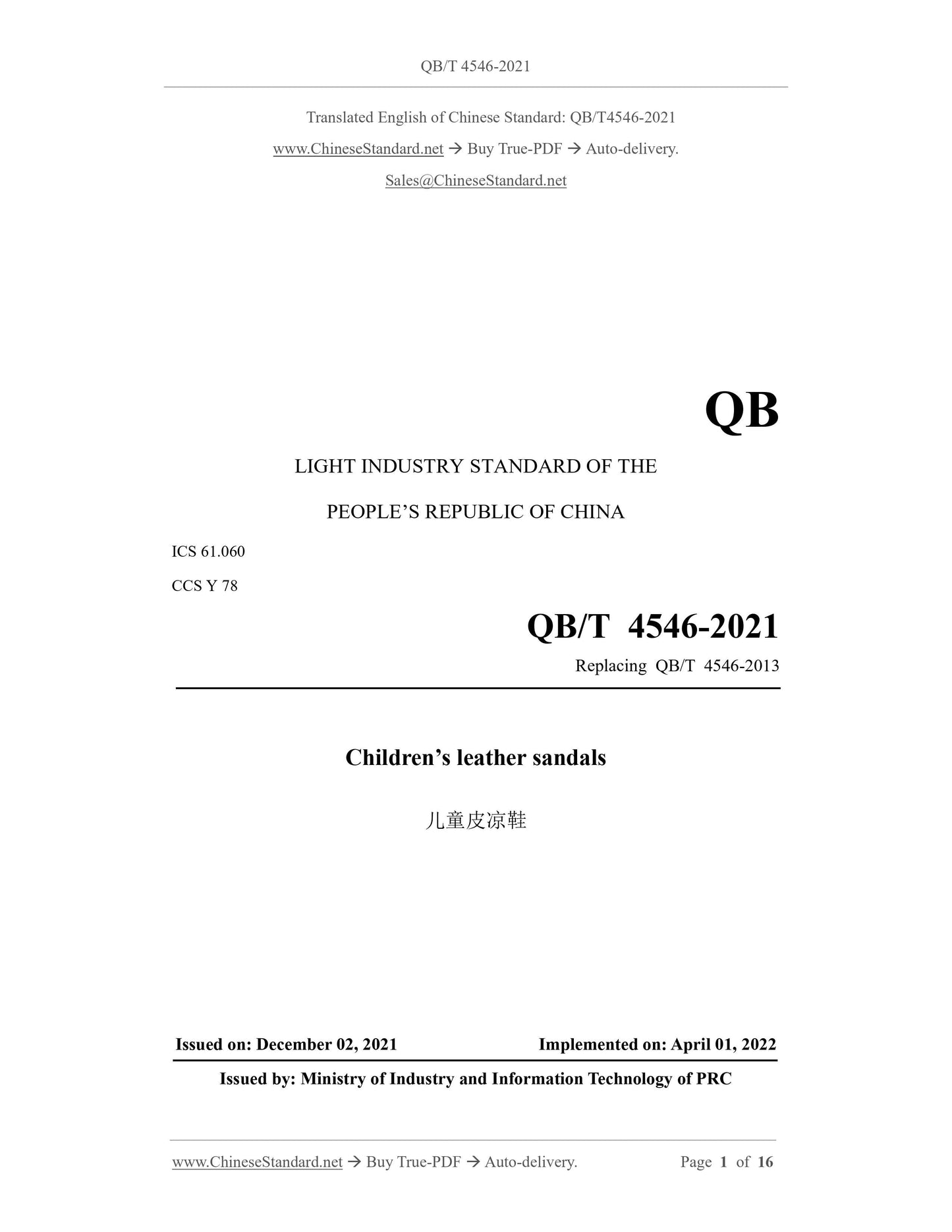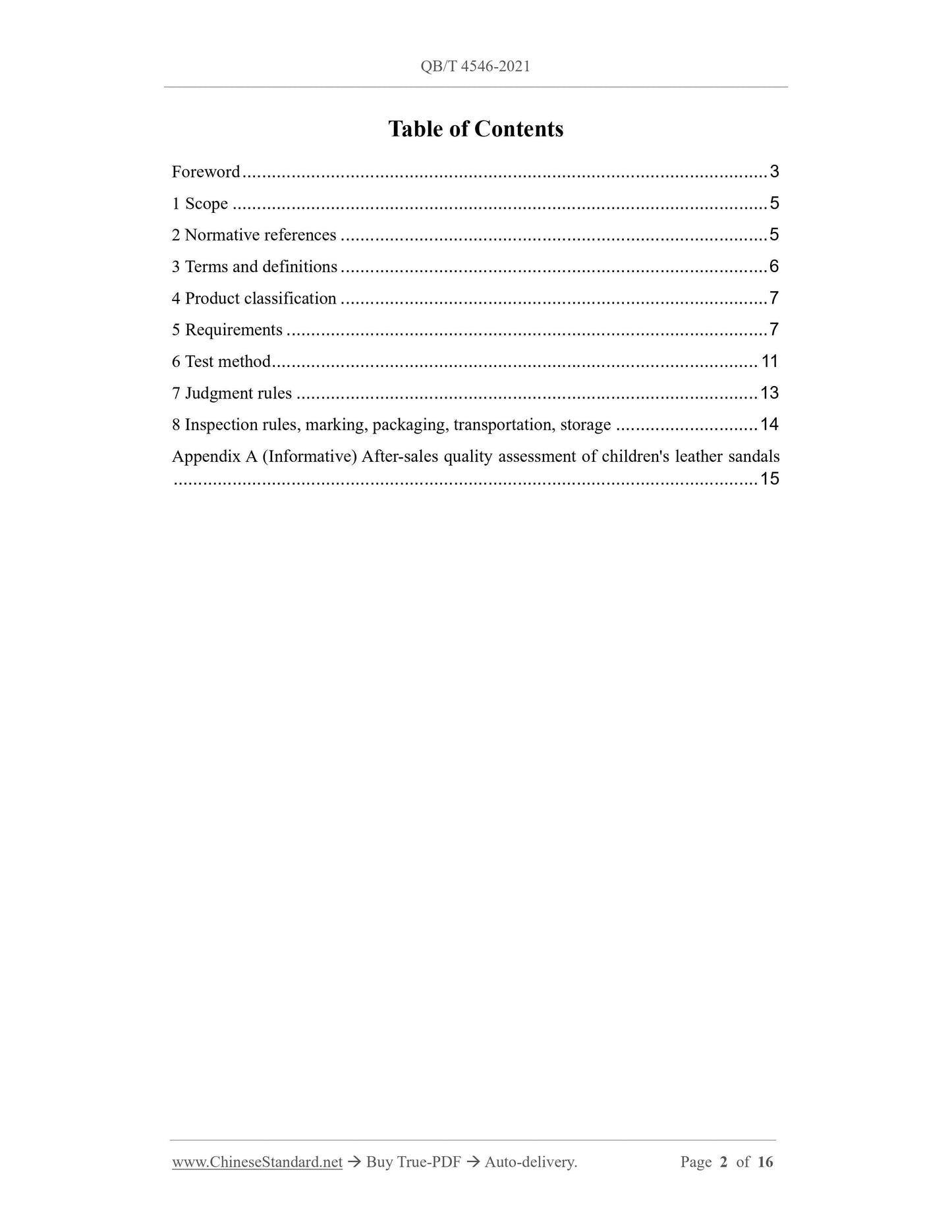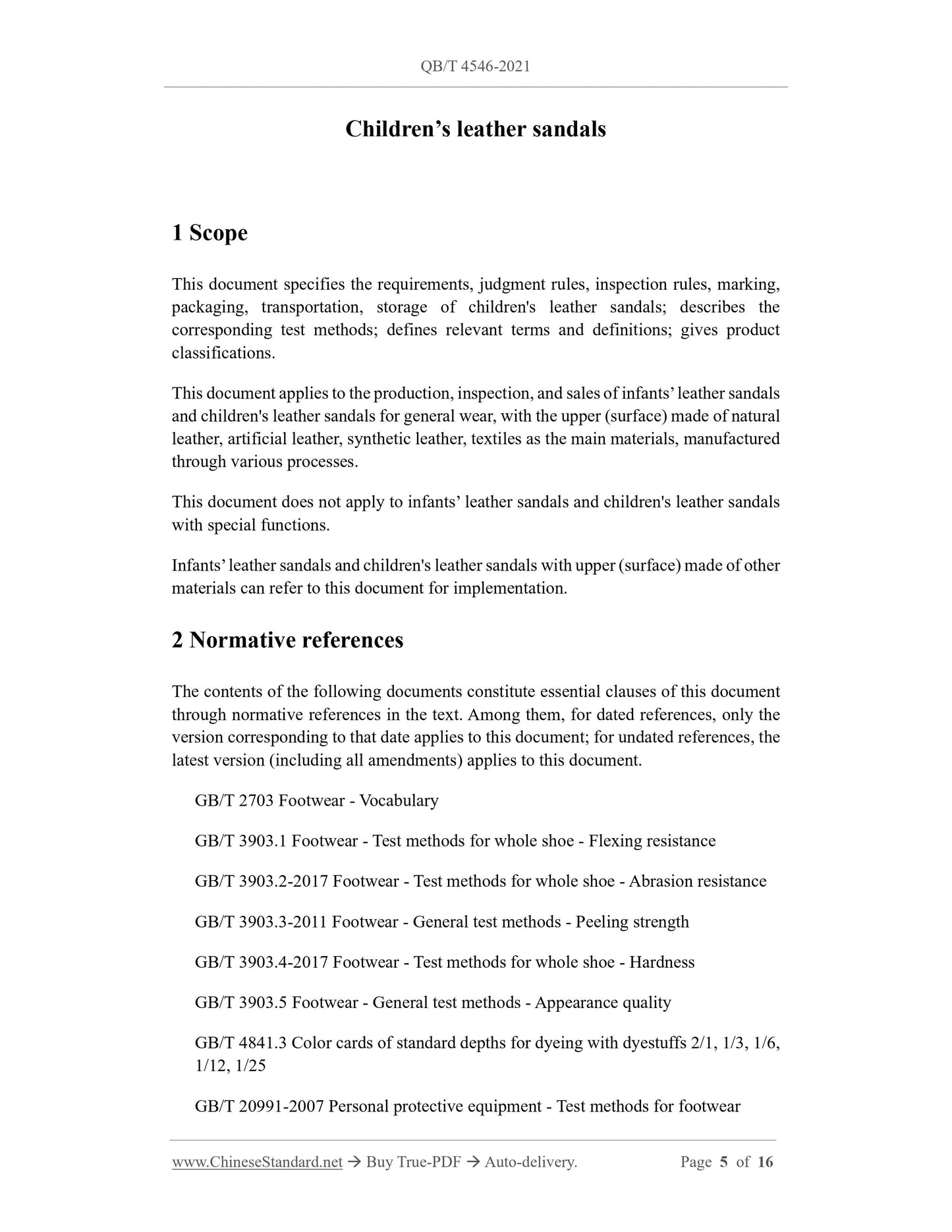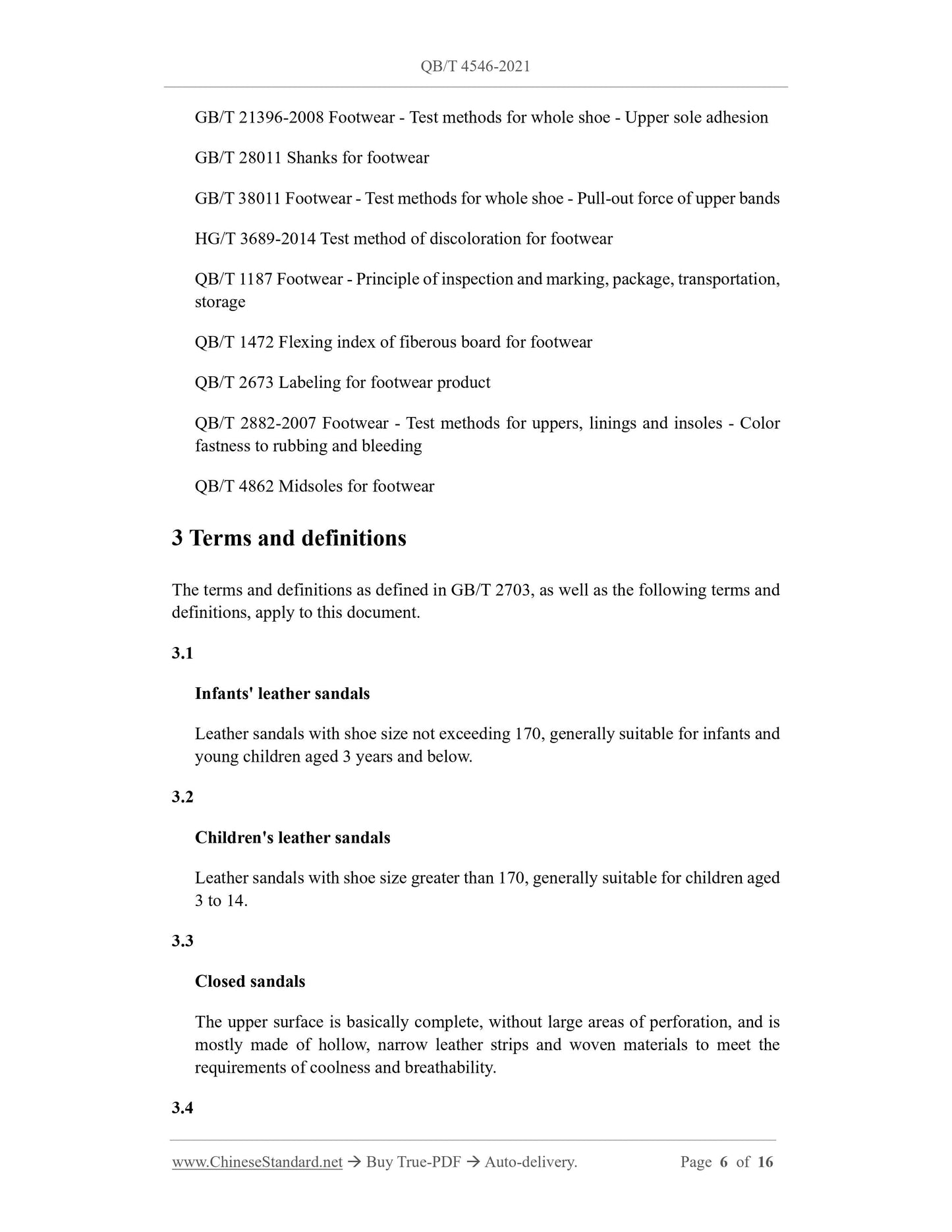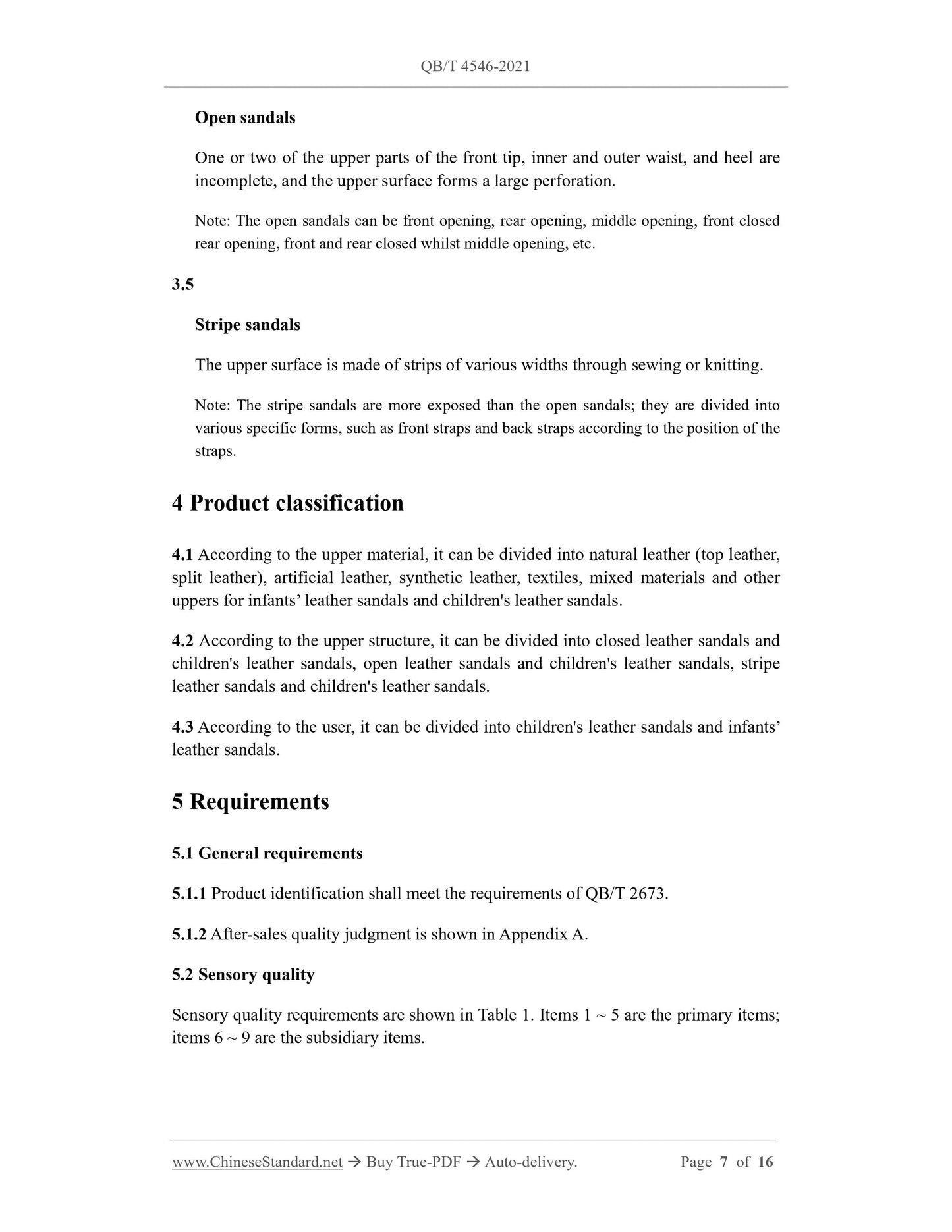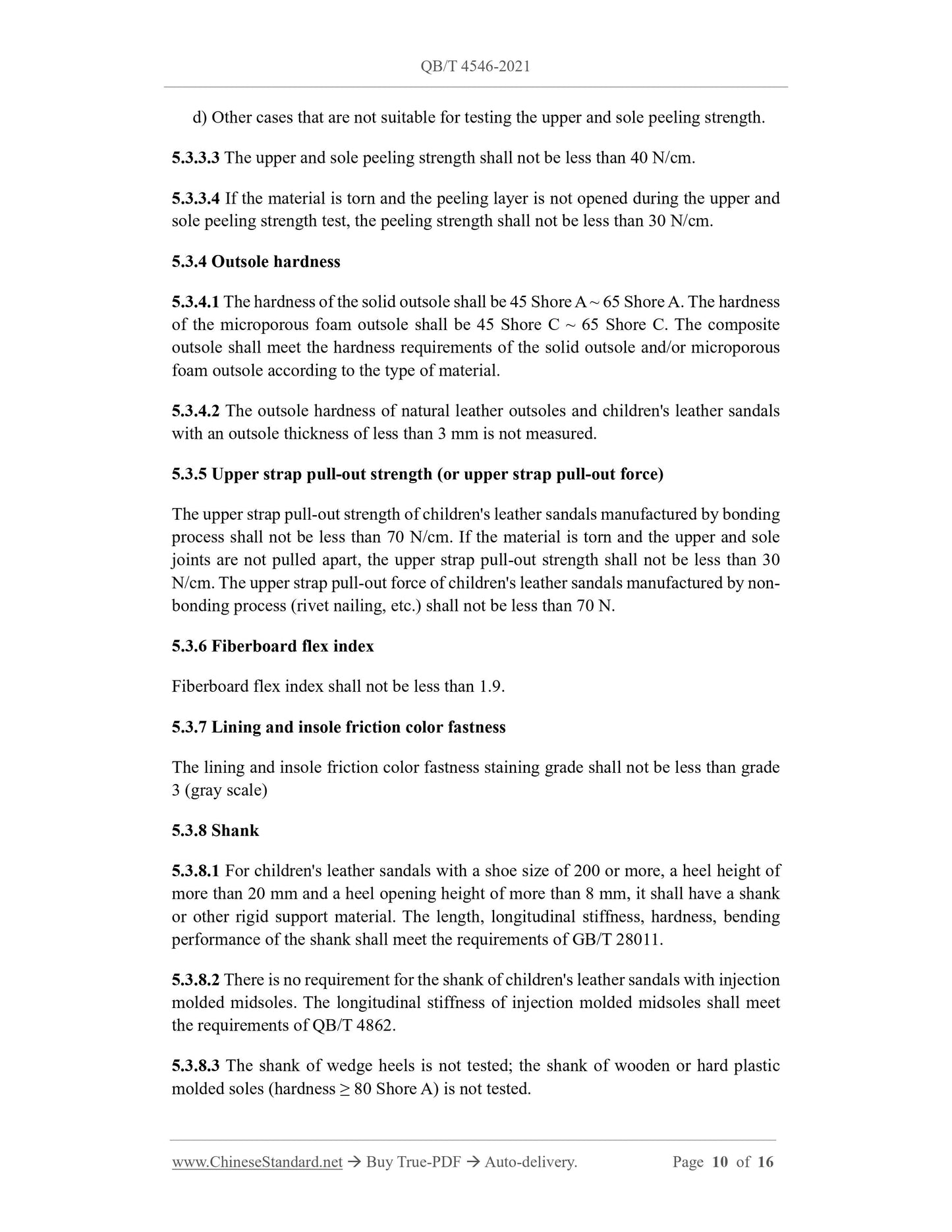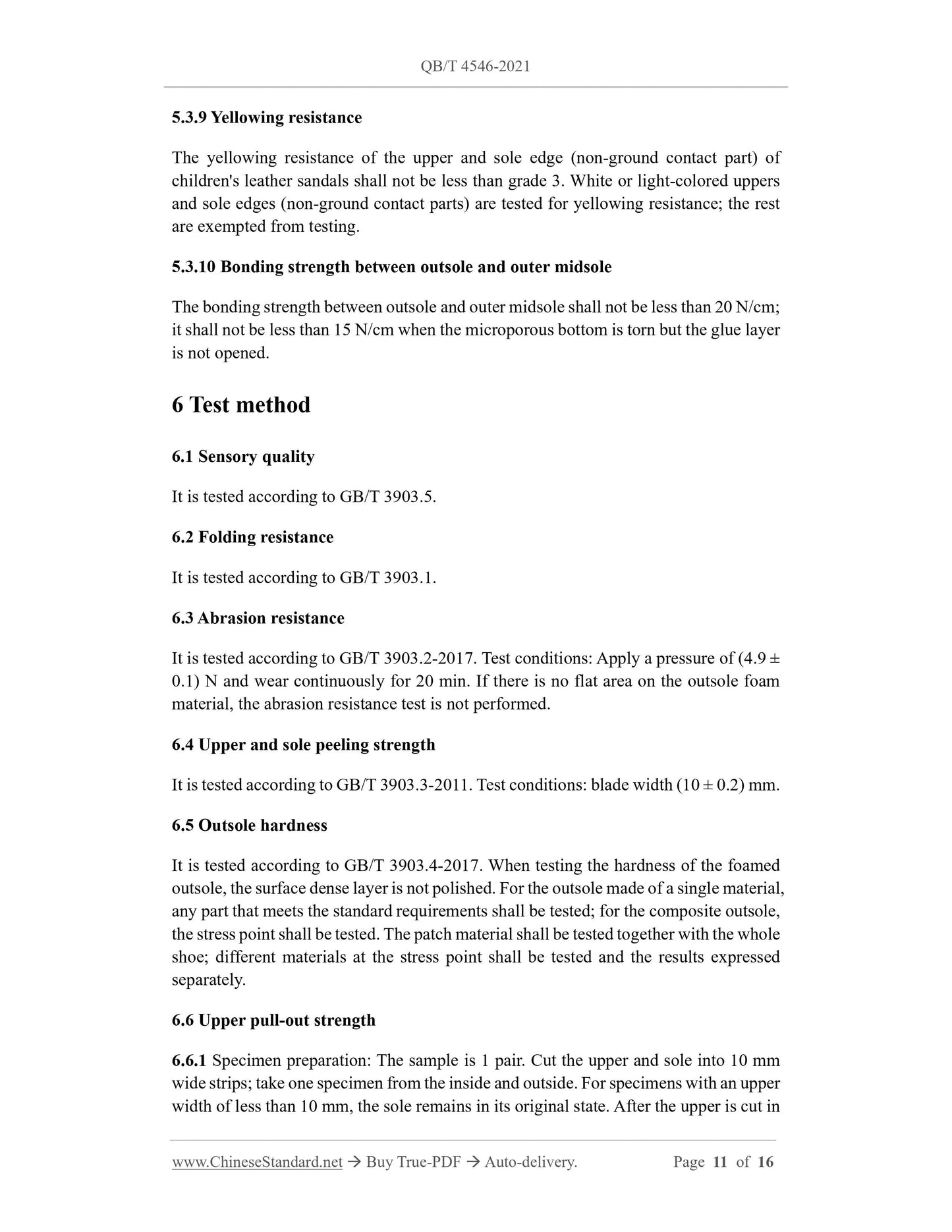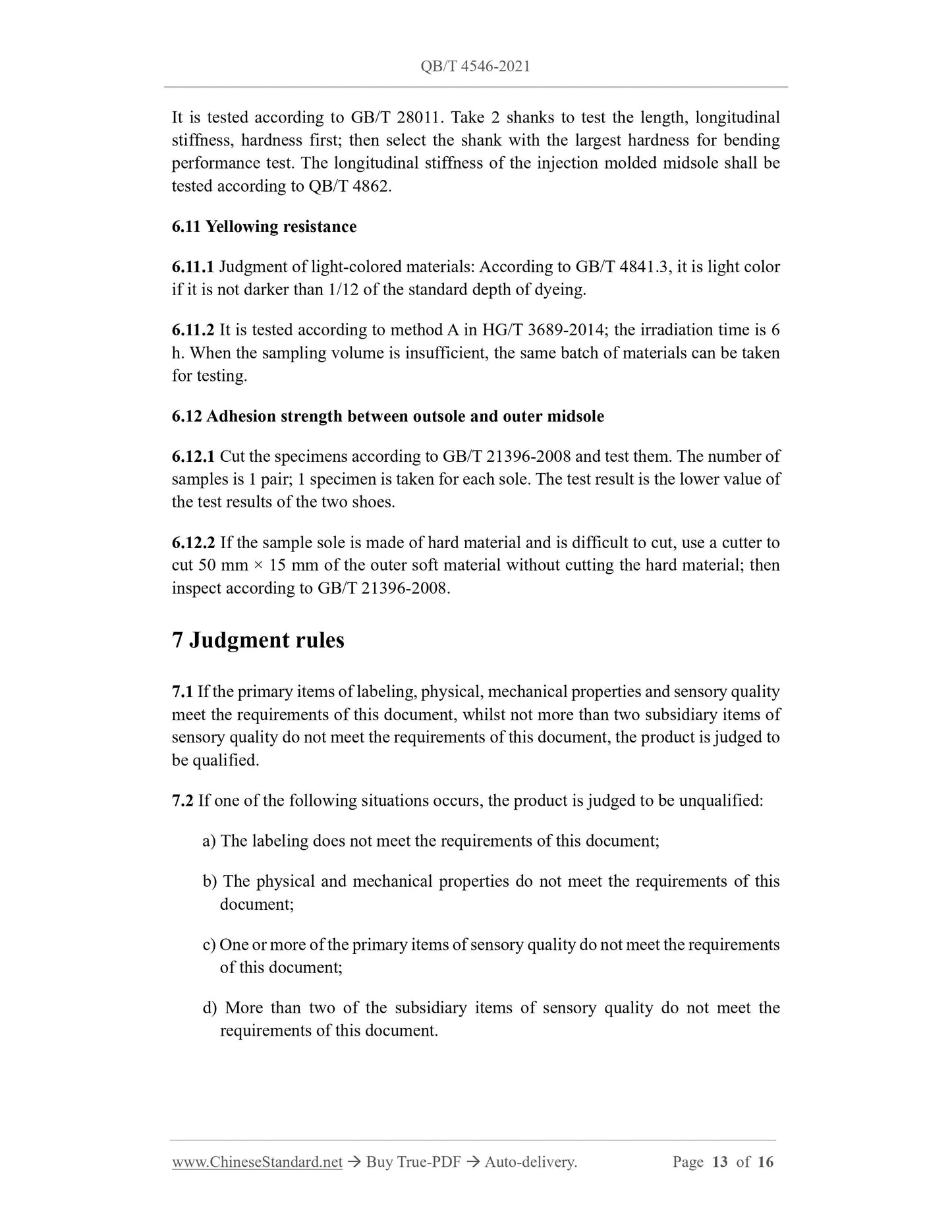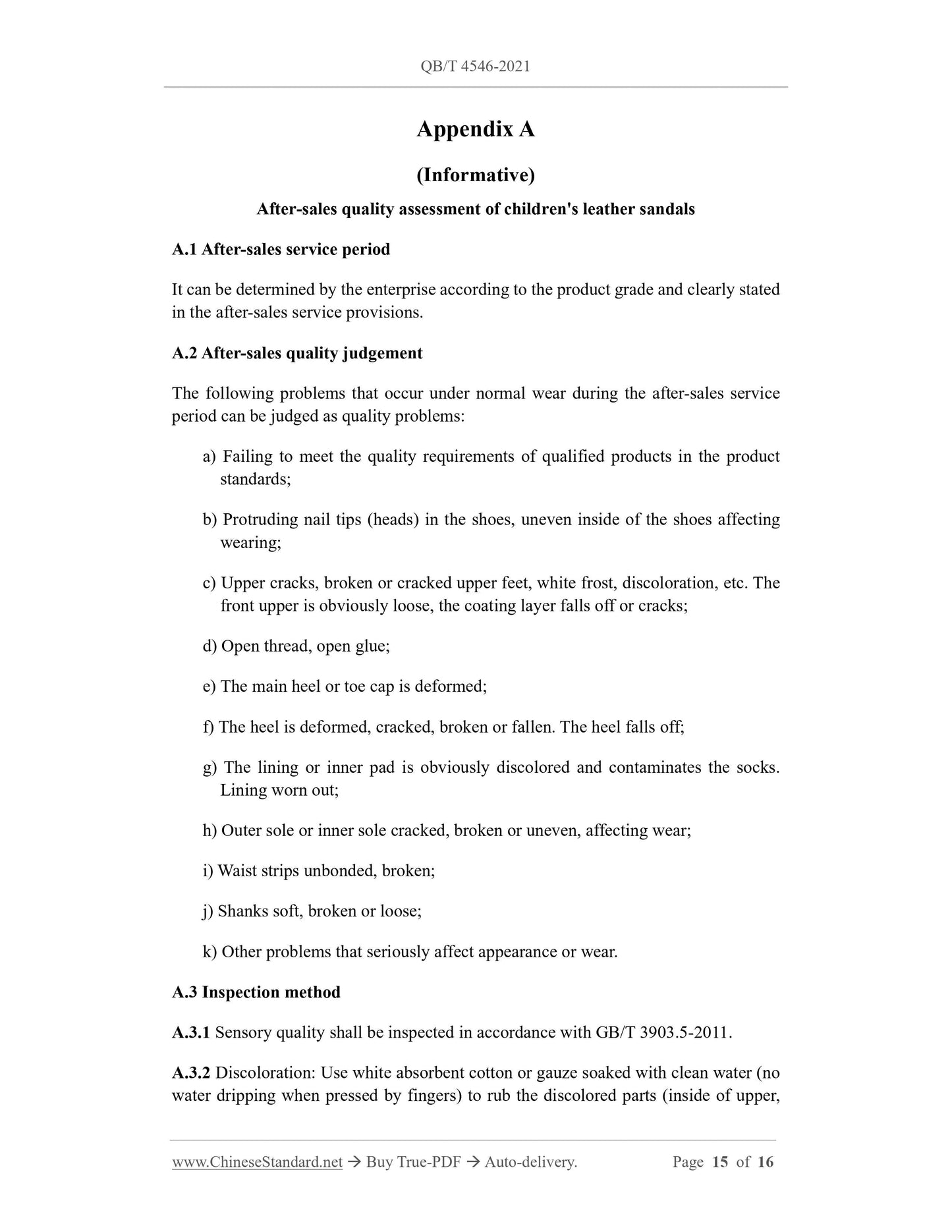1
/
of
9
www.ChineseStandard.us -- Field Test Asia Pte. Ltd.
QB/T 4546-2021 English PDF (QB/T4546-2021)
QB/T 4546-2021 English PDF (QB/T4546-2021)
Regular price
$170.00
Regular price
Sale price
$170.00
Unit price
/
per
Shipping calculated at checkout.
Couldn't load pickup availability
QB/T 4546-2021: Children leather sandals
Delivery: 9 seconds. Download (and Email) true-PDF + Invoice.Get Quotation: Click QB/T 4546-2021 (Self-service in 1-minute)
Newer / historical versions: QB/T 4546-2021
Preview True-PDF
Scope
This document specifies the requirements, judgment rules, inspection rules, marking,packaging, transportation, storage of children's leather sandals; describes the
corresponding test methods; defines relevant terms and definitions; gives product
classifications.
This document applies to the production, inspection, and sales of infants’ leather sandals
and children's leather sandals for general wear, with the upper (surface) made of natural
leather, artificial leather, synthetic leather, textiles as the main materials, manufactured
through various processes.
This document does not apply to infants’ leather sandals and children's leather sandals
with special functions.
Infants’ leather sandals and children's leather sandals with upper (surface) made of other
materials can refer to this document for implementation.
Basic Data
| Standard ID | QB/T 4546-2021 (QB/T4546-2021) |
| Description (Translated English) | Children leather sandals |
| Sector / Industry | Light Industry Standard (Recommended) |
| Classification of Chinese Standard | Y78 |
| Word Count Estimation | 9,968 |
| Issuing agency(ies) | Ministry of Industry and Information Technology |
Share
